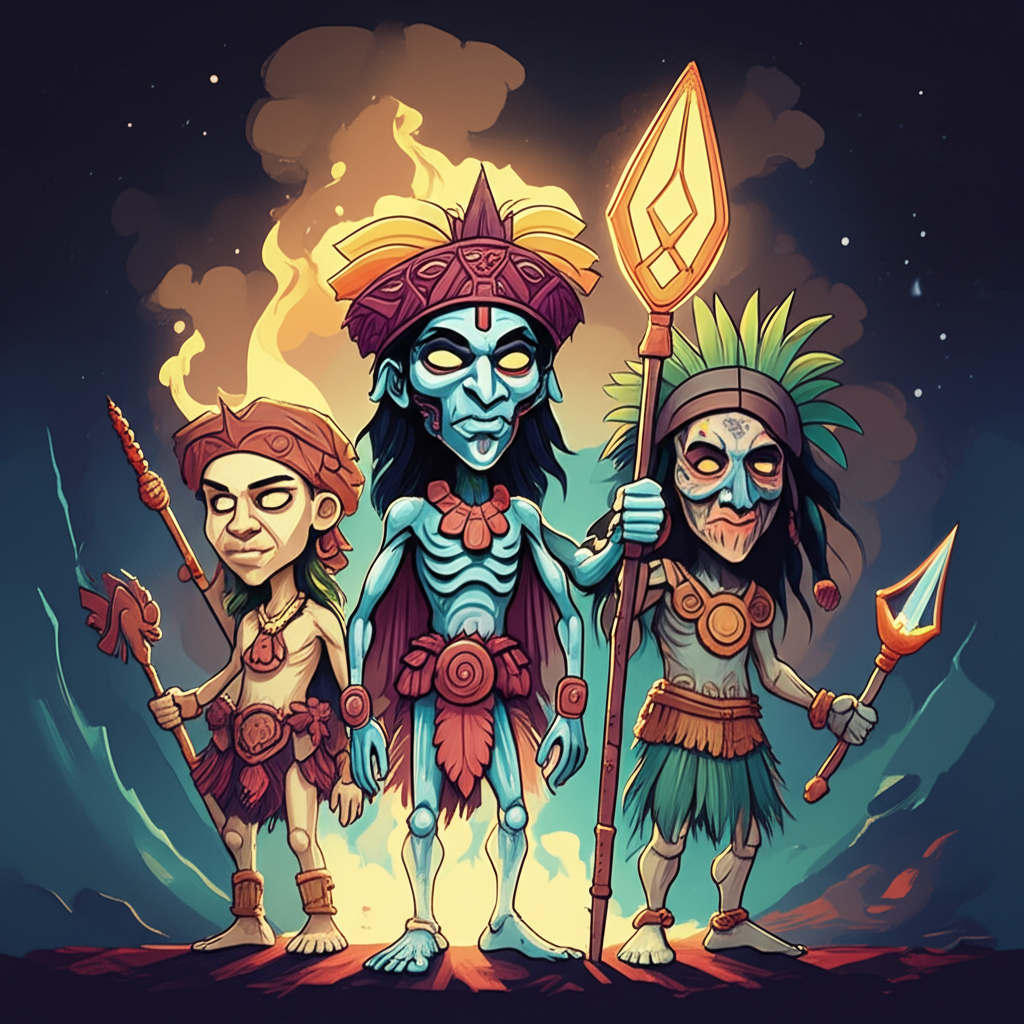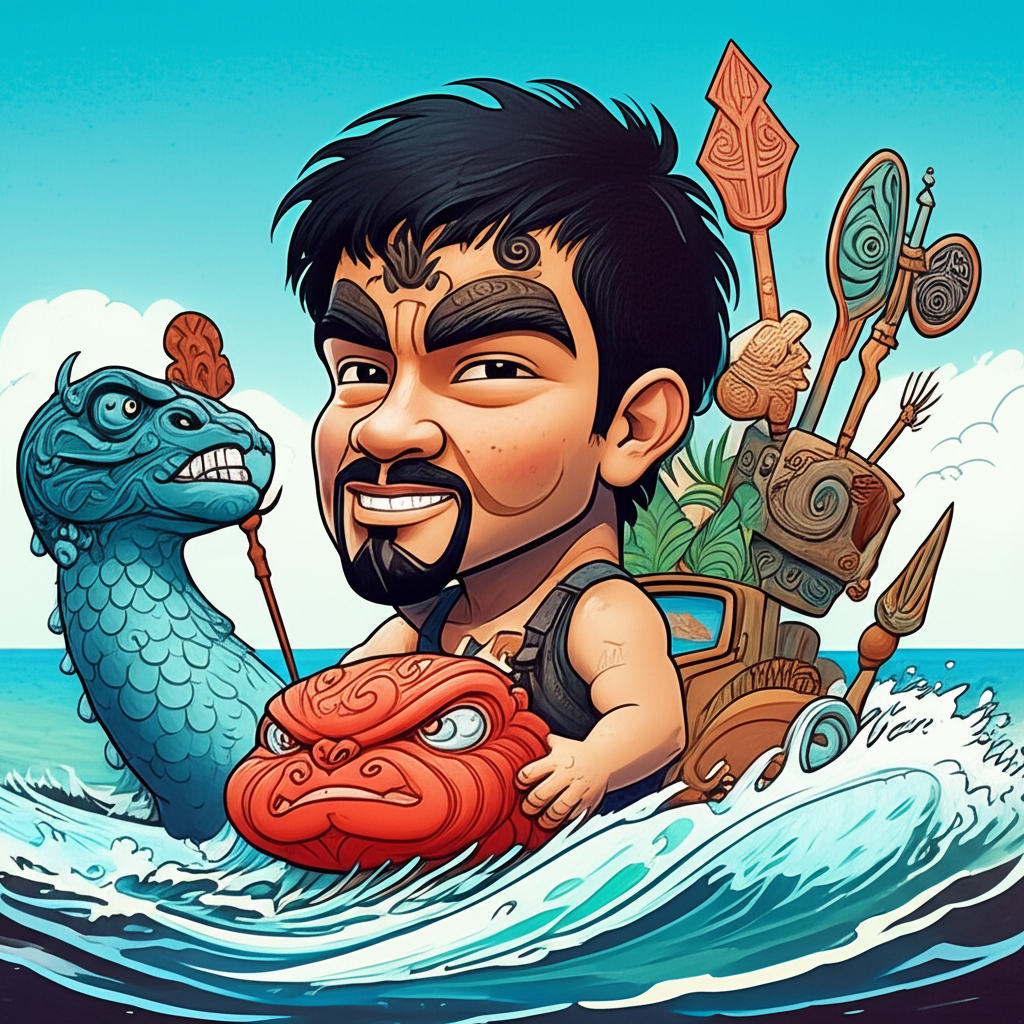
Across the vast, sapphire expanse of the Pacific Ocean, where volcanic islands rise like emerald jewels from the deep, a rich tapestry of oral traditions has been woven over millennia. These stories, passed down through generations, offer a glimpse into the worldview of ancient peoples, their understanding of the cosmos, and their relationship with the natural world. Among these captivating narratives, the legends of the Huaka’i Pō, or Night Marchers, and the mythical ancestral homeland of Hawaiki, particularly as they resonate within the cultural echoes of Maui, stand as powerful testaments to human imagination and the enduring power of storytelling.
It is crucial to approach these tales with the understanding that they are traditional narratives, born from the beliefs and interpretations of ancient cultures. They are not presented as factual accounts or divine pronouncements, but rather as valuable windows into the past, offering insights into the cultural, historical, and psychological landscape of the peoples who conceived them.
The World of the Ancients: Breath of the Land and Sea
The cultural milieu from which these stories emerge is one deeply intertwined with the rhythms of nature. For the ancient Polynesian peoples, the world was not a passive backdrop but a living, breathing entity, imbued with spiritual essence. The vast ocean was both a provider and a formidable force, the land a source of sustenance and sacredness, and the heavens a realm of celestial beings and ancestral spirits. Life was a delicate balance, dictated by the cycles of seasons, the tides, and the movements of the stars.
In this worldview, the unseen was as real as the tangible. Spirits of ancestors, nature deities, and mythical creatures were believed to inhabit the world alongside humans, influencing events and shaping destinies. Rituals, chants, and storytelling were vital tools for maintaining harmony with these forces, understanding the world, and preserving collective memory. The islands themselves, born from the fiery heart of the earth, were seen as sacred places, each with its own stories and guardian spirits.
The Spectral Procession: The Huaka’i Pō
The Huaka’i Pō, or Night Marchers, are figures that populate the darker corners of Hawaiian folklore, particularly on the island of Maui. These are not beings to be worshipped, but rather spectral processions, believed to be the spirits of fallen warriors, chiefs, or those who met a violent end. They are described as appearing on moonless nights, often in coastal areas or along ancient pathways.
Symbolically, the Night Marchers represent the enduring power of the past and the lingering presence of those who have gone before. Their spectral nature speaks to the veil between the living and the dead, a boundary that, in these stories, can be breached under specific circumstances. The torches they are often depicted carrying are not sources of warmth or light in the conventional sense, but rather symbolic embers of their former lives, or perhaps the guiding lights of their spectral journey. Their appearance is often accompanied by the sound of drums and chanting, further emphasizing their organized, if phantom, march. These are not benevolent spirits, but rather a somber reminder of mortality and the potential for the past to manifest in unsettling ways.
The Whispering March: A Night on Maui
Imagine a night on Maui, the air thick with the scent of plumeria and the distant murmur of the ocean. The moon has long since set, leaving the island cloaked in an inky darkness. It is during such nights, when the veil between worlds is said to thin, that the Huaka’i Pō are believed to emerge.
The legend whispers of a chilling sound, a faint, rhythmic beat that seems to emanate from the very earth. It begins as a distant hum, growing steadily louder, accompanied by the rustling of unseen feet and the clatter of spectral armor. Then, from the shadows of the ancient lava fields or along the moon-drenched beaches, they appear.
A line of figures, their forms indistinct and shimmering, moves with a silent, purposeful stride. Some are said to be clad in the traditional regalia of warriors, their silhouettes outlined by the faint glow of phantom torches. Others appear as mere wisps of smoke, their faces lost to the darkness. The air around them grows cold, a palpable chill that seeps into the bones. Their passage is not marked by the warmth of life, but by an unnerving silence, broken only by the rhythmic beat of their unseen drums and the soft, resonant echo of their chanting.
The stories warn that to witness the Huaka’i Pō is a perilous omen. If one is caught in their path, it is said that they might be drawn into the spectral procession, forever joining their ranks. It is advised to lie flat on the ground, to avert one’s gaze, and to remain absolutely still until the chilling sound fades into the night. They are not a force to be confronted or understood, but a phenomenon to be endured, a reminder of the ancient powers that are said to hold sway when the world sleeps.
The Lost Homeland: Hawaiki
Intertwined with these spectral narratives is the profound concept of Hawaiki. Hawaiki is not merely a geographical location but a potent symbol of origin, ancestry, and the spiritual homeland from which the Polynesian peoples are believed to have migrated. It is a place often described as a paradise, a land of abundance and peace, from which the voyagers set sail, driven by a desire for new lands or perhaps by divine command.
The echoes of Hawaiki are woven into the very fabric of Polynesian culture. It represents a deep ancestral connection, a shared heritage that binds together the diverse island communities. The stories of Hawaiki are not just tales of migration; they are also narratives of courage, resilience, and the enduring spirit of exploration. The symbolic attributes of Hawaiki include a sense of lost paradise, a yearning for the ancestral home, and a foundation upon which their current existence is built. It is the origin point from which their lineage, their traditions, and their very identity sprang.
The Great Migration: A Journey from Hawaiki
The narrative of Hawaiki is a grand epic of human endeavor and cosmic connection. Ancient Polynesian oral traditions speak of a time when all their peoples shared a common ancestral homeland, a fertile and bountiful land known as Hawaiki. This was a place where the gods walked among mortals, where knowledge of navigation and agriculture flourished, and where the foundations of their culture were laid.
From this mythical land, the ancestors, guided by celestial signs and the whispers of the winds, embarked on monumental voyages across the uncharted Pacific. They crafted magnificent double-hulled canoes, vessels of incredible ingenuity and resilience, and set sail with the stars as their compass and the currents as their guides. These were not journeys undertaken out of desperation, but often out of a spirit of exploration, a quest for new horizons, and perhaps a divine calling to spread life and culture across the vast ocean.
Island after island was discovered and settled, each new land imbued with the essence of Hawaiki. The traditions, languages, and customs of the ancestors were carried with them, evolving and adapting to the unique environments they encountered. Yet, the memory of Hawaiki remained, a powerful anchor to their origins, a source of collective identity, and a constant reminder of their shared lineage. It is a story that speaks of the human drive to explore, to connect, and to build civilizations, all rooted in a profound respect for the ancestral past.
Symbolism and Meaning: Nature, Fear, and Identity
For the ancient peoples, the Huaka’i Pō likely served as a powerful manifestation of their fears and their respect for the unknown. They could represent the dangers of the night, the unpredictable nature of the spiritual realm, and the consequences of transgressions against the natural order. The spectral warriors might also have been a way to honor the bravery and sacrifice of past heroes, albeit in a chilling and cautionary manner.
Hawaiki, on the other hand, embodied a complex interplay of concepts. It was a symbol of origin and belonging, a reminder of a lost paradise that fueled a sense of shared identity. It represented the ingenuity and courage of their ancestors, their mastery of the sea, and their ability to thrive in new environments. The yearning for Hawaiki could also signify a spiritual quest, a longing for a return to a state of primordial harmony and connection.
Modern Echoes: From Folklore to Fiction
In contemporary times, these ancient stories continue to resonate, albeit in transformed forms. The Huaka’i Pō appear in literature, films, and video games, often depicted as terrifying specters or formidable adversaries. They serve as a source of cultural mystique, a way to inject an element of the supernatural into narratives and to explore themes of history and the uncanny.
Hawaiki, too, finds its place in modern interpretations, often explored in historical fiction, academic studies, and cultural revitalisation movements. It serves as a symbol of Polynesian identity, a reminder of their rich heritage, and a testament to their remarkable seafaring past. These modern interpretations, while drawing inspiration from the original folklore, are understood within the context of imagination and storytelling, rather than as literal beliefs.
A Tapestry of Tales
The legends of the Huaka’i Pō and Hawaiki, as they echo through the cultural landscape of Maui and beyond, are profound examples of how ancient peoples sought to understand their world and their place within it. They are intricate narratives woven from the threads of nature, human experience, and a deep sense of the spiritual.
As Muslims, we recognize that the ultimate truth lies in the divine revelation of Allah, the sole Creator and Sustainer of all existence. These stories, while captivating and culturally significant, are understood as products of human imagination and the cultural traditions of ancient peoples. They offer us a valuable opportunity to appreciate the diversity of human storytelling, the power of imagination, and the enduring legacy of cultural heritage that continues to shape our understanding of the world and the diverse tapestry of human experience. They remind us that stories, in their myriad forms, are a fundamental part of what it means to be human, connecting us to the past, informing our present, and inspiring our future.





